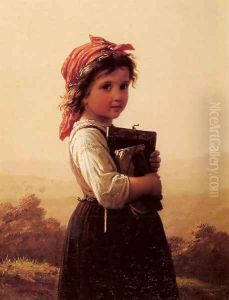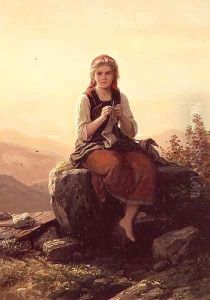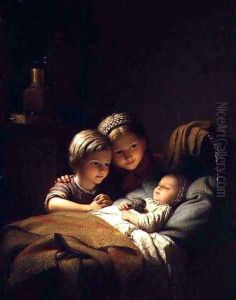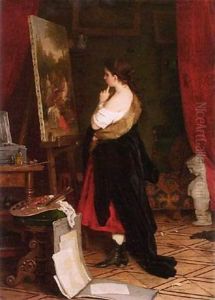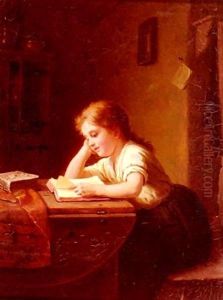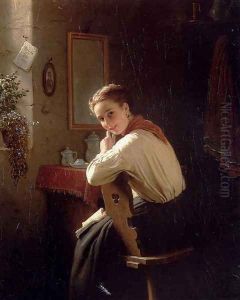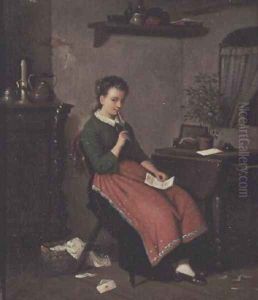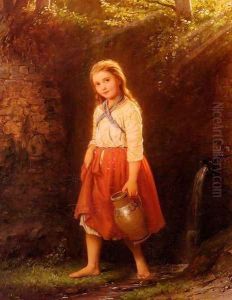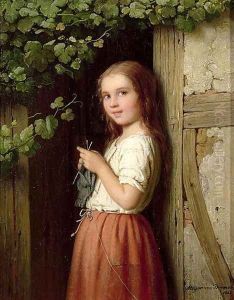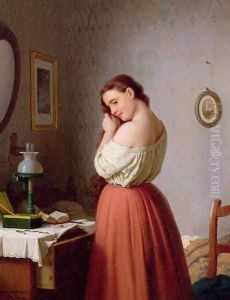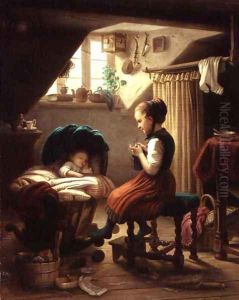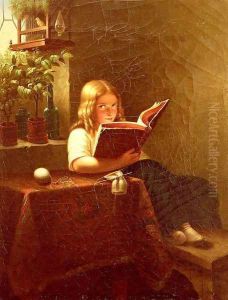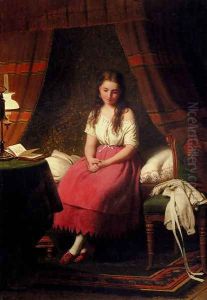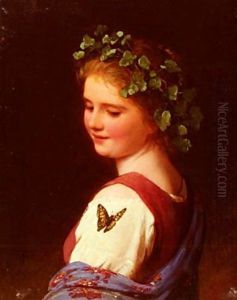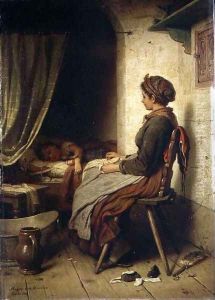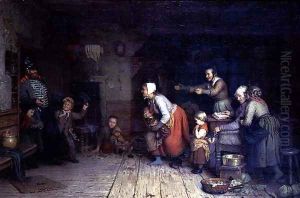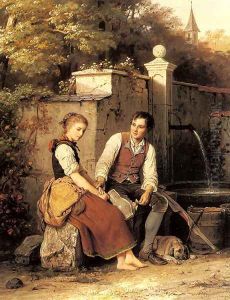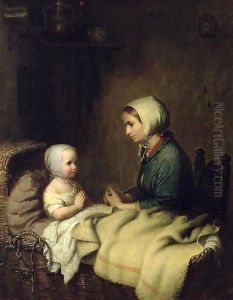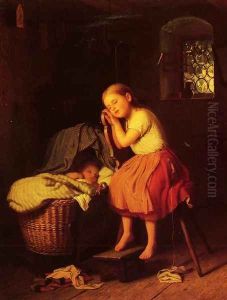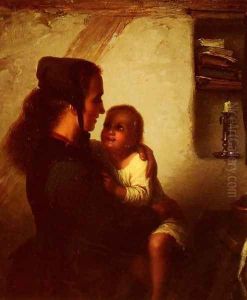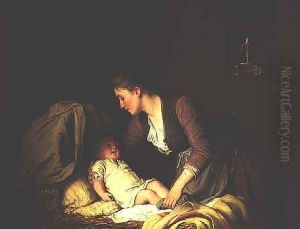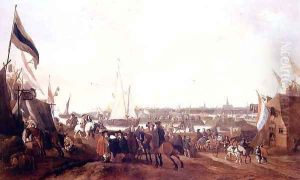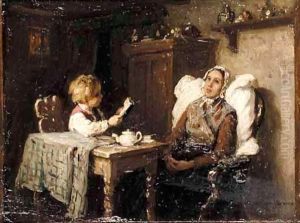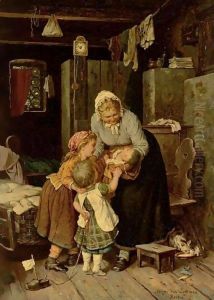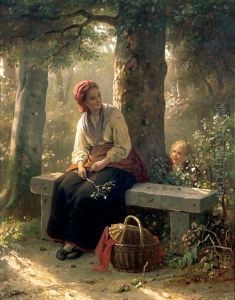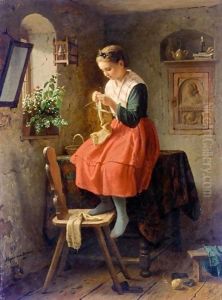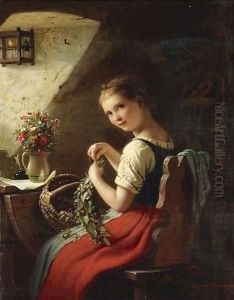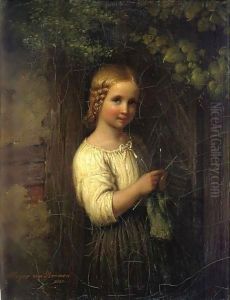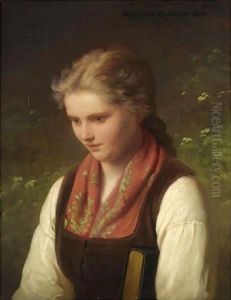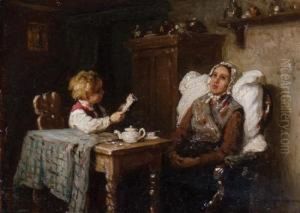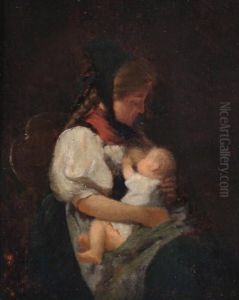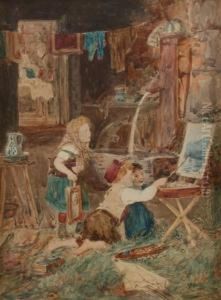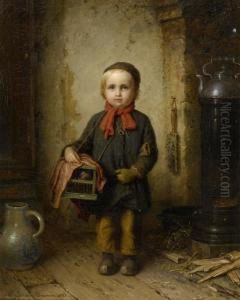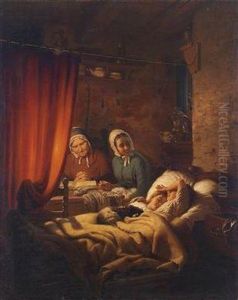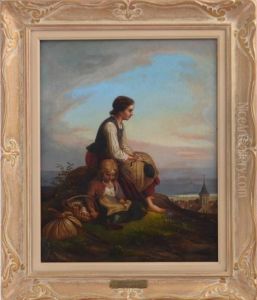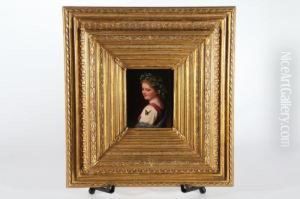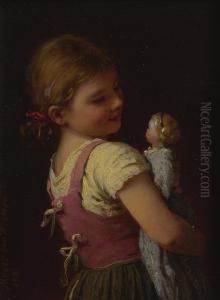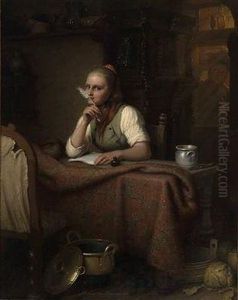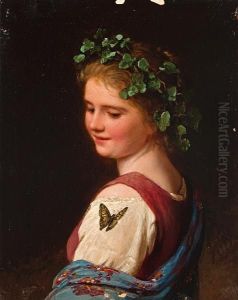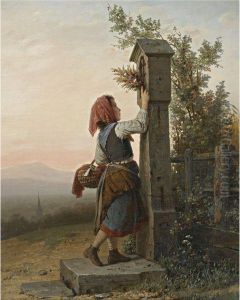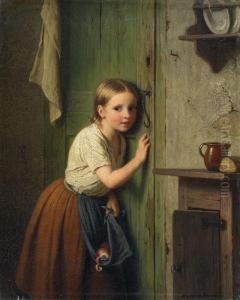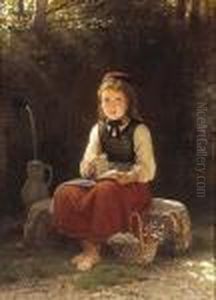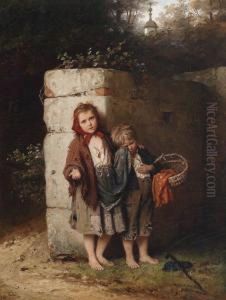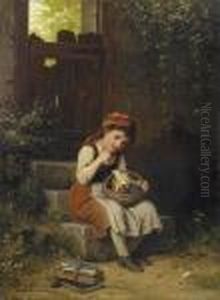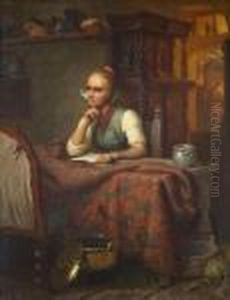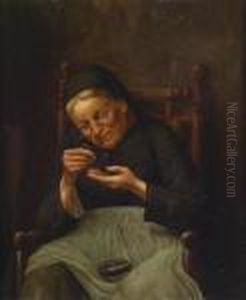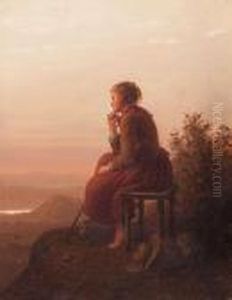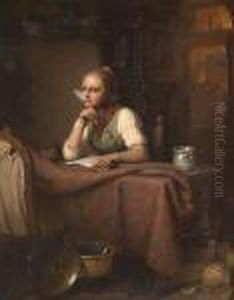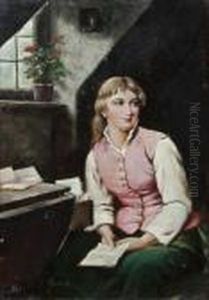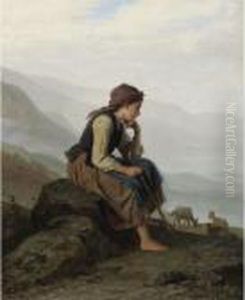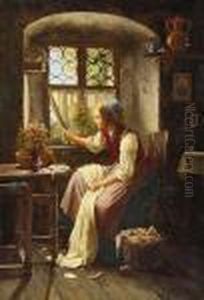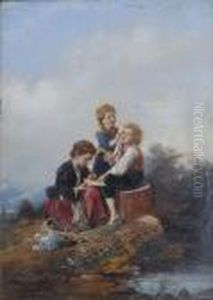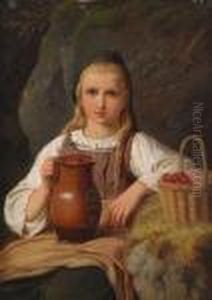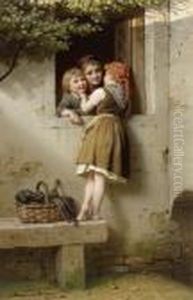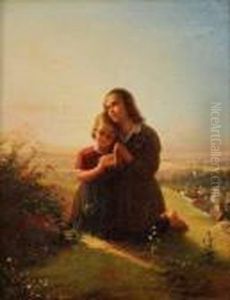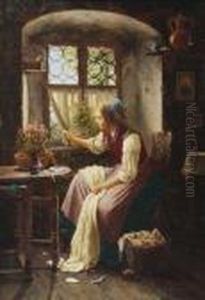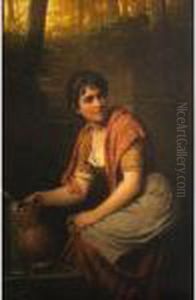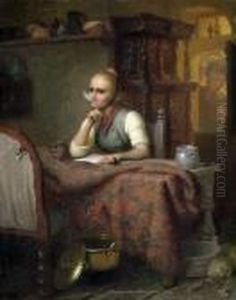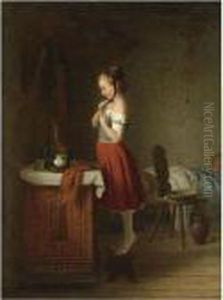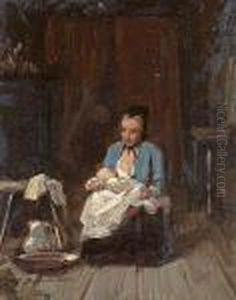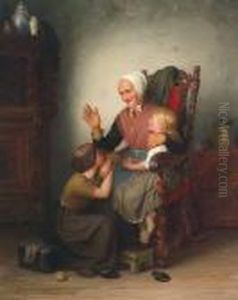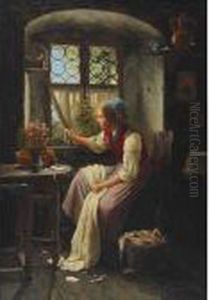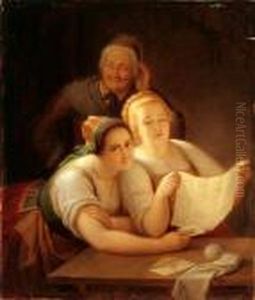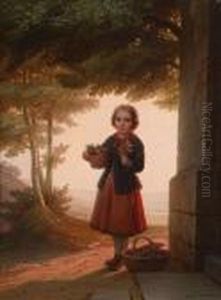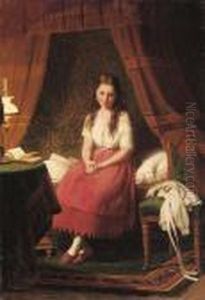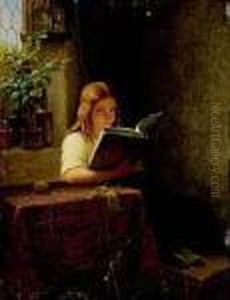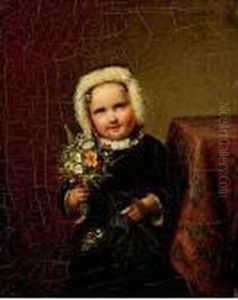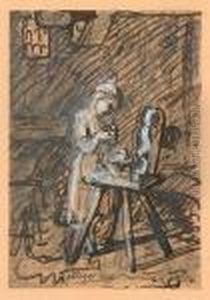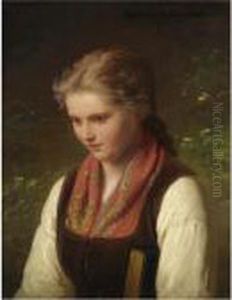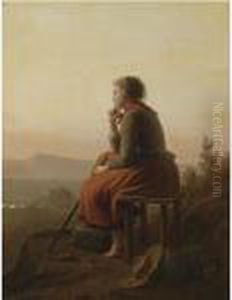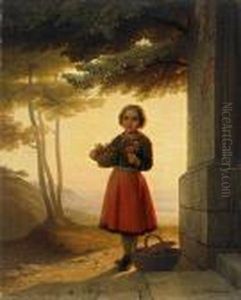Meyer Georg von Bremen Paintings
Johann Georg Meyer, known as Meyer von Bremen, was a German painter born on October 28, 1813, in Bremen, Germany. He is best recognized for his genre paintings, which often depicted scenes of domestic life, children, and peasant families with a sentimental and idyllic quality. Meyer von Bremen showed artistic promise from a young age and went on to study art at the Düsseldorf Academy, one of the leading art schools in Germany at the time.
Under the tutelage of renowned teachers such as Wilhelm von Schadow, Meyer von Bremen honed his skills in the detailed and meticulous style characteristic of the Düsseldorf school. He began exhibiting his work in the 1830s, quickly gaining acclaim for his genre scenes that captured the customs and atmosphere of rural and family life. His paintings were celebrated for their fine detail, warm color palette, and the delicate portrayal of his subjects.
In 1841, Meyer von Bremen moved to Berlin, where he continued to work and develop his artistic career. His work found favor with the Prussian court, and he received commissions from various members of European nobility. Despite his success, he remained deeply connected to his roots in Bremen, and his works often reflected the values and lifestyle of his hometown.
Meyer von Bremen's paintings were popular not only in Germany but also abroad. His art was exhibited in international exhibitions, including those in Paris, where his work was well received. He was also active in the artistic community, becoming a member of the Berlin Academy and participating in various art organizations.
The appeal of Meyer von Bremen's work lay in its accessibility and the way it resonated with the middle-class audience of the time. His scenes of everyday life, rendered with a sense of nostalgia and warmth, were particularly appealing in an era that was experiencing rapid industrialization and social change.
Johann Georg Meyer von Bremen passed away on December 4, 1886, in Berlin. He left behind a legacy as one of the leading genre painters of the 19th century, and his works continue to be appreciated for their charm, technical skill, and historical value.
